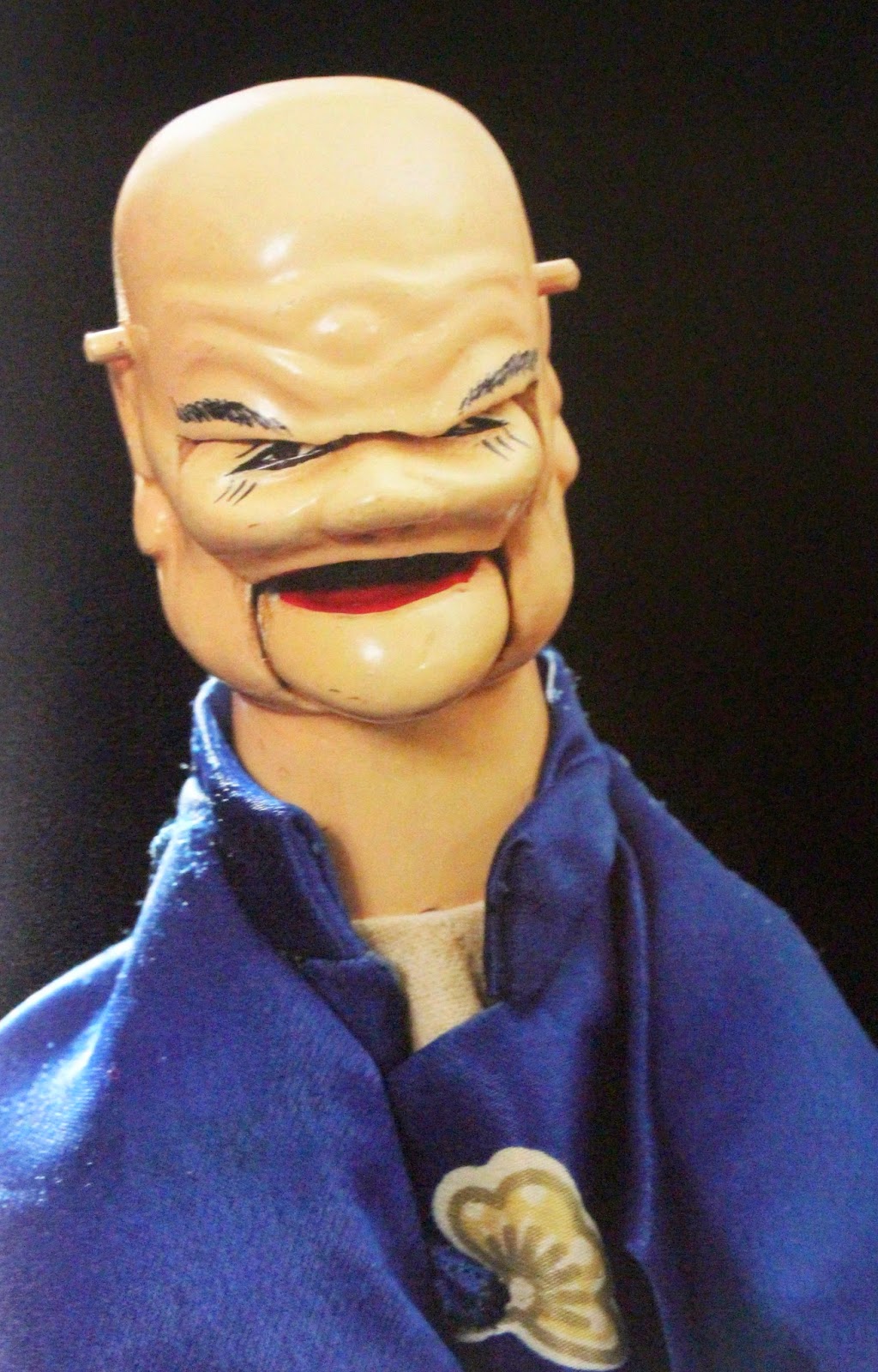In praise of puppets
It’s easy to spot the besotted. They lavish their progeny with praise. They
dress them in the finest clothes and want to show them off, desperate to garner
praise. It’s all about one-eyed love.
This is true of parents and puppeteers; apart from the means
of reproduction there seems to be little difference. It’s a point proved by the
work of Ardian Purwoseputro, the author and principal photographer of a
splendidly illustrated text on the subject - Wayang Potehi of Java.
More scholarly
research on the glove puppets of Java may eventuate. This year the author won a
Nippon Foundation Asian Public Intellectual collaborative grant for further
study.
Whatever follows, this book will be the primary source so
all credit to the pioneer. As Purwoseputro
discovered, there’s been a dearth of information in Indonesia; the best source
to date has been in Taiwan.
The author describes himself as an independent researcher
and film maker. His interest in a
little-known art started with “childhood dissatisfaction … which suddenly
resurfaced when I watched a Potehi puppet show in early 2012.”
The location was a luxury Surabaya hotel, not the back
streets of Blitar where the young author-to-be loved the snacks and other
treats that accompanied performances.
His mother gave him a Potehi doll, but it was a cheap puppet, a little
devil, not up to the standards of those bought by his friends’ richer parents.
Nonetheless it excited his imagination and the spark
remained.
Future PhD students will have to be content with analysing
the symbols because Purwoseputro has almost sucked the topic dry of facts, adding
a fine glossary, biography and a four-page list of Potehi characters.
Wayang Potehi (also known as wayang thithi in East Java where the art remains strongest) is
believed to have come from Southern China, particularly Fujian Province. There’s
a quaint myth to explain its origins:
Four prisoners condemned to death tried to lift their depression by
performing with improvised hand puppets, using a jangle of pots and pans to
make music.
They created such a racket that warders investigated. They were astonished by the men’s spirit so
took them to the king who, of course, offered pardons with conditions: They had
to spread the art and make it popular. Variations of this story also appear in
other cultures.
Fujian is the homeland of the ancestors of the Peranakan
Chinese of Indonesia and the Malay Peninsula, according to Professor Leo Suryadinata.
In his foreword the former director of Chinese heritage at
Singapore’s Nanyang Technological University writes that Chinese law prohibited
the migration of women so the men who went overseas married locally. Their descendants (including the author)
became the Peranakan, a distinct ethnic group with its own foods and lively
hybrid culture.
Potehi based on classical Chinese stories entered Indonesia
with the migrants. It spread through
parts of the archipelago getting indigenised along the way. The earliest record
comes from Batavia (now Jakarta) in the 17th century.
Around the same time another finger-puppet show was
appearing in Britain. Punch and Judy originated in Italian culture and was
popular entertainment till recently.
Critics have condemned the violence in the stories as incompatible with modern
values.
In 1967 the Orde Baru (New Order) government introduced
Presidential Instruction 14 banning all expressions of Chinese language and culture.
This was not because the Potehi dolls were politically incorrect by whacking
each other with cudgels as in Europe, but because the Chinese were equated with
communism. To the paranoid it mattered
not that Potehi predated Mao Tse-tung by several centuries. Even the lotus
flower, a symbol of eternity, was banned.
This wasn’t the first time authorities had interfered in the
common people’s fun. In the 1750s the
colonial Dutch started taxing performances because the shows were often
associated with gambling.
Fortunately folk art rooted in the community is not so
easily eradicated by authoritarianism. Potehi didn’t perish; it hibernated.
Potehi were previously seen only in temple courtyards, locations where they
still perform. (The book includes details.)
But once Soeharto had quit the stage the puppets came out of their boxes
and into shopping malls and hotels, inspiring Purwoseputro to discover more.
The audiences and the dalang (puppet masters) were no longer exclusively
Chinese; performances had evolved and ownership had now become shared with the
Javanese.
The three-dimensional puppets are still being made and
exhibited. Purwoseputro set about finding collections and sometimes the artists
(who he calls “sculptors”), getting their stories and photographing their
creations. He also found puppets brought
from China early last century that stayed hidden from the culture cops.
Inevitably there are demons and royalty, wise men and
knockabout comics, fantasy figures all. The stories contain “heroism, romance
and tragedy, strategies and intrigues, loyalty and betrayal, as well as
humor.” Each story title is selected
after a ritual asking permission from the temple deities.
Performances are accompanied by a small orchestra that includes
string, wind and percussion instruments. The box stages are also splendid works of art.
This is an easy book to view, though sadly not to read. The text is tiny and sometimes set against
absorbing colors, a serious design error.
Try reading blue on white or vice versa and stay sane.
Described by publisher Afterhours Books as ‘a premium
coffee-table book’, it retails a shade under a million rupiah (US $84).
Indonesians may blanch at the cost, but it’s a fraction of
prices charged for books in Europe, so good value.
For example, art historian Lydia Kieven’s
inadequately-illustrated Following the Cap
Figure in Majapahit Temple Reliefs (reviewed 19 August 2013), is half the
size and almost entirely monochrome. It
was originally listed at US $142 (Rp 1.7 million).
(First published in The Jakarta Post 14 July 2014)


No comments:
Post a Comment